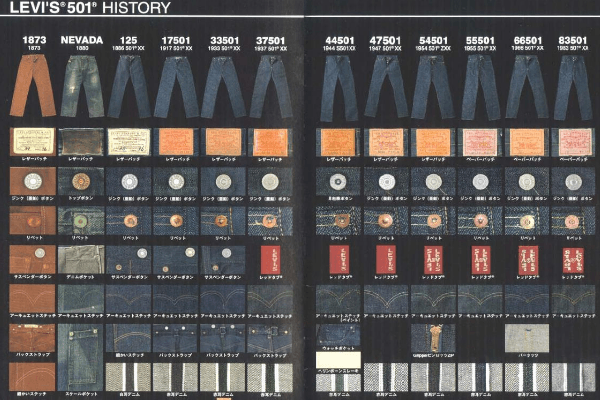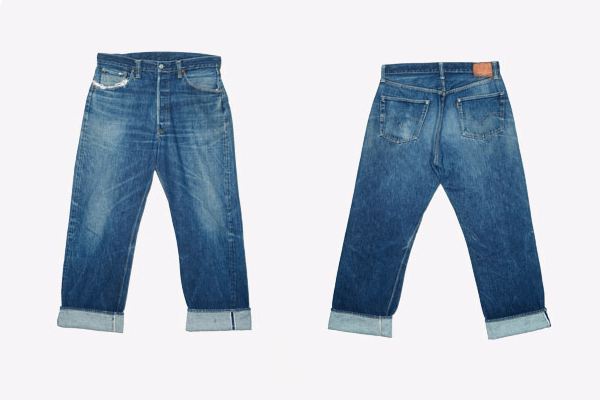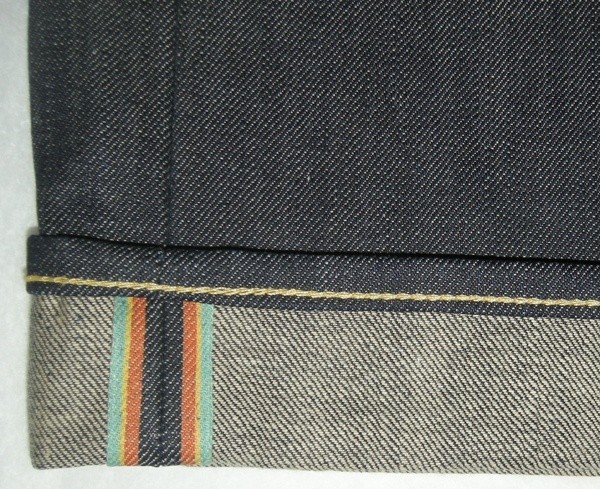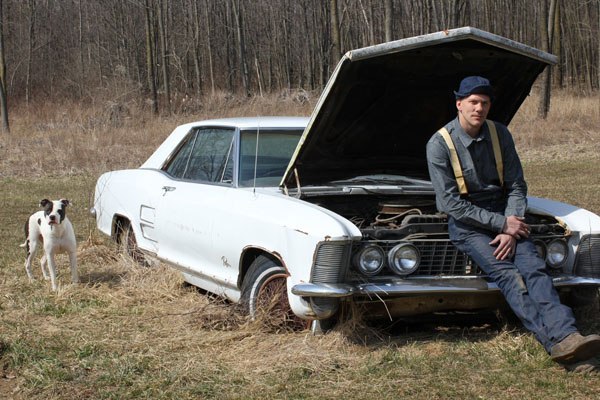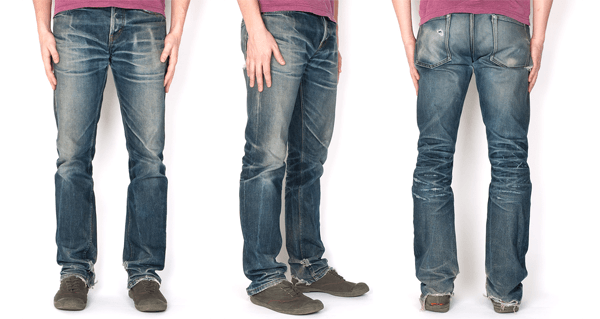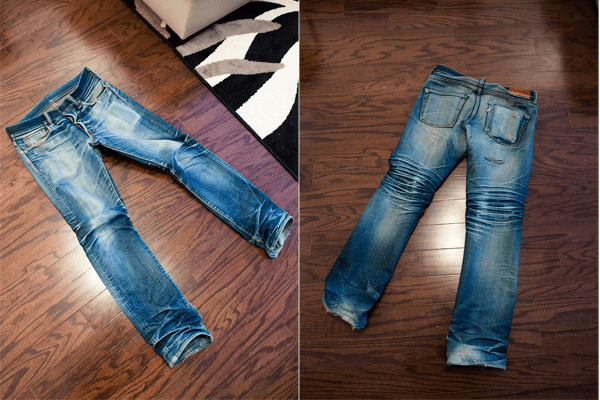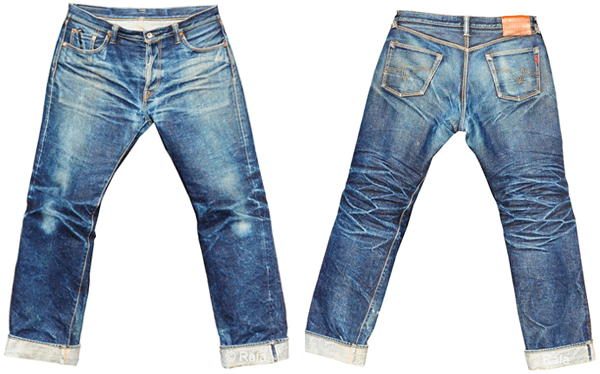
Levi’s Made and Crafted (LM&C), a division of the premium Levi’s XX line, offers up a broad selection of higher-end products each season. Covering all the bases from outerwear to shirts and bottoms, LM&C gives consumers a particularly strong selection for their Spring/Summer line. I myself was lucky enough to be sent a pair of the Tack model jeans and have been wearing them religiously since.
After spending some time with them and getting to know the jeans in more depth I am now ready to offer up my review of the Levi’s Made and Crafted Tack Rigid Selvedge Jeans.

Details:
- Name: Levi’s Made and Crafted Tack Jeans
- Weight: 12 oz.
- Denim: 100% cotton Japanese Indigo Selvedge Denim (Rigid Wash)
- Other Details:
- Red Selvedge Line
- Blue Levi’s flag
- Made and Crafted Leather Patch
- Zipper fly
- Made and Crafted branded waist button
- Interior Back Pocket Stitching
- Available at: Zappos Online Shop for $198.00
Denim

Selvedge Details
The selvedge denim used in the Tack jeans comes straight from the vintage looms used by Levi’s in Japan. Though the finish of these jeans are marked as “rigid”, do not be deceived. The denim used to make this jean is surprisingly soft and light coming in at about 12 oz. As far as looks go, the denim possesses a nice dark indigo tone that is consistent throughout.
As for the actual selvedge, the denim’s finishing is a bit different than most Levi’s denim that I have seen. While they’ve used the standard red line selvedge they’re famous for, the red is a little bit more subdued by the white selvedge stitching that borders it. This is an aesthetic detail that LM&C takes great pride in including, albeit many may not notice.
Considering the product is for their Spring/Summer collection I feel that the chosen weight of the denim was spot on. Coming in at about 12 oz, the light nature and breathability of this jean makes them a perfect pair for the upcoming warmer days and nights (and would be an excellent addition to our previous post, “5 Pairs of Raw Denim Jeans for Summer“).
Fit

Levi’s Tack Front Back and Side (size 32 x 34)
The fit of the Tack is a bit different than the standard Levi’s 514 slim fit silhouette. As stated earlier, the fit of this jean draws upon a shape Levi’s previously used in the 1960s. The jean starts as a slim fit through the thigh and slightly tapers from the knee down to the bottom hem.
In classic Levi’s fashion, the jean’s fit is quite true to size. I’m wearing a 32 x 34 above, which is a bit longer than I usually wear, but felt the cuffing at the bottom gives the jeans a slightly more old school look.
Hardware
As the name Made and Crafted implies, immense attention was given to the denim’s construction department. All the stitching was done in two tone gold and yellow thread; sewn just thick enough to be noticed, but not too thick that it becomes obnoxious. Stress points are reinforced with a combination of rivets and bar tack stitching.

The leather backpatch comes in an unstained tan leather color with Levi’s Made and Crafted branding embossed on it. However, one aspect that really stood out to me was the back pocket’s interesting take on the classic Levi’s arc. Rather than being sewn on the outside, the back pocket arches are sewn into the inside seat of the pants themselves. Thus as you wear the pants the pattern wears into the pockets. Of course no Levi’s denim would be complete without the tag, which is included on the back pocket and instead comes in a wonderful blue color.

As we make our way around to the front of the pants we encounter traditionally styled rivets on the front pockets. There’s also find a nifty little hidden selvedge detail on the inside of the coin pocket. The jeans come with a zipper fly, Made & Crafted branded waist button, and the chain stitched hems keep everything together with a tight finish at the bottom of the legs.

Taking a look at the interior of the jeans, there’s another hidden selvedge detail along the left side of the waist opening. Continuing to the left is a waist size tag and Made and Crafted branded pocket bag which also allows you to claim official ownership over your new jeans. The coolest feature of these pocket bags is that Levi’s paid extra attention to detail and sewed one side into the leg stitching so that they do not shift around during wear. The back of the waist features a Levi’s Made and Crafted tag which bears the model name and lot number.

Construction

Bar Tacks, Rivets and Stitching
Levi’s has always been known for it’s sturdy construction as well as their meticulous attention to detail while putting their garments together. From when I opened the package I was excited with what lay in store for me and impressed to see that the pants fit well and felt great. However by the end of the first day of wear, the stitching on the crotch of my jeans had started to come loose.
I let it sit for a couple of days hoping that it wouldn’t spread, but when it did I eventually gave the jeans a quick little rescue sew job and they’ve held up nicely since. All the major seams and stress points seem to have been reinforced with chain stitching and while I’m no garment construction or sewing expert, you’ll have to take a good look through the pictures to gain a full understanding.
The post Levi’s Made & Crafted Tack Rigid Selvedge – Review appeared first on RawrDenim.com.
 Everything is authentic. From sweatshop manufactured sweatpants, to hand-woven
Everything is authentic. From sweatshop manufactured sweatpants, to hand-woven 






 The ads ran during the height of the recent economic meltdown and focused on hardscrabble messages like “Will Work for Better Times,” or “Everybody’s Work is Equally Important” with images of Braddock residents going to work in their dilapidated home city. The campaign set out to make Braddock the poster child of industrial ghost towns but at the same time equate that “down but not out” blue-collar American identity and imagery with Levi’s clothing.
The ads ran during the height of the recent economic meltdown and focused on hardscrabble messages like “Will Work for Better Times,” or “Everybody’s Work is Equally Important” with images of Braddock residents going to work in their dilapidated home city. The campaign set out to make Braddock the poster child of industrial ghost towns but at the same time equate that “down but not out” blue-collar American identity and imagery with Levi’s clothing.



























